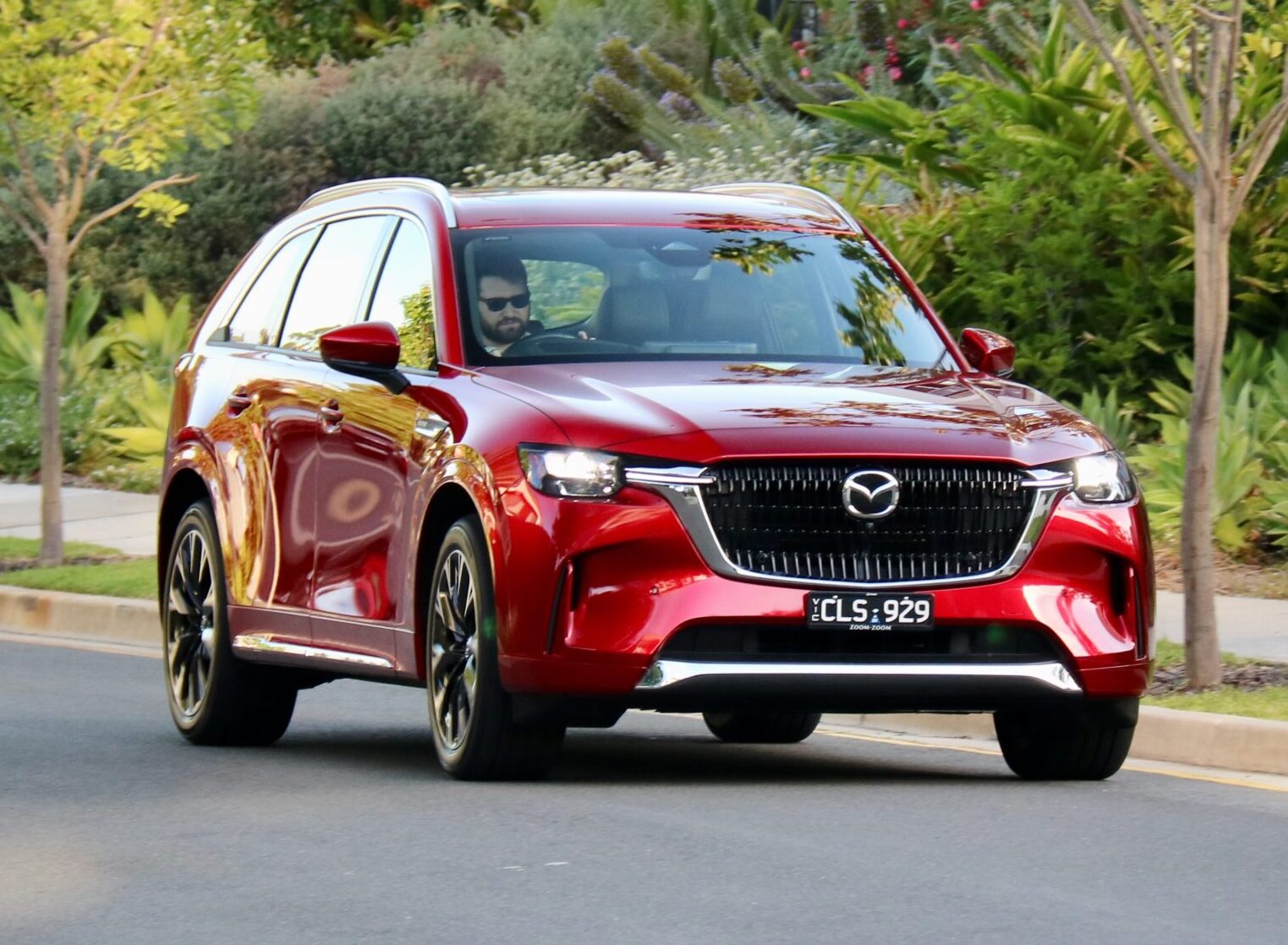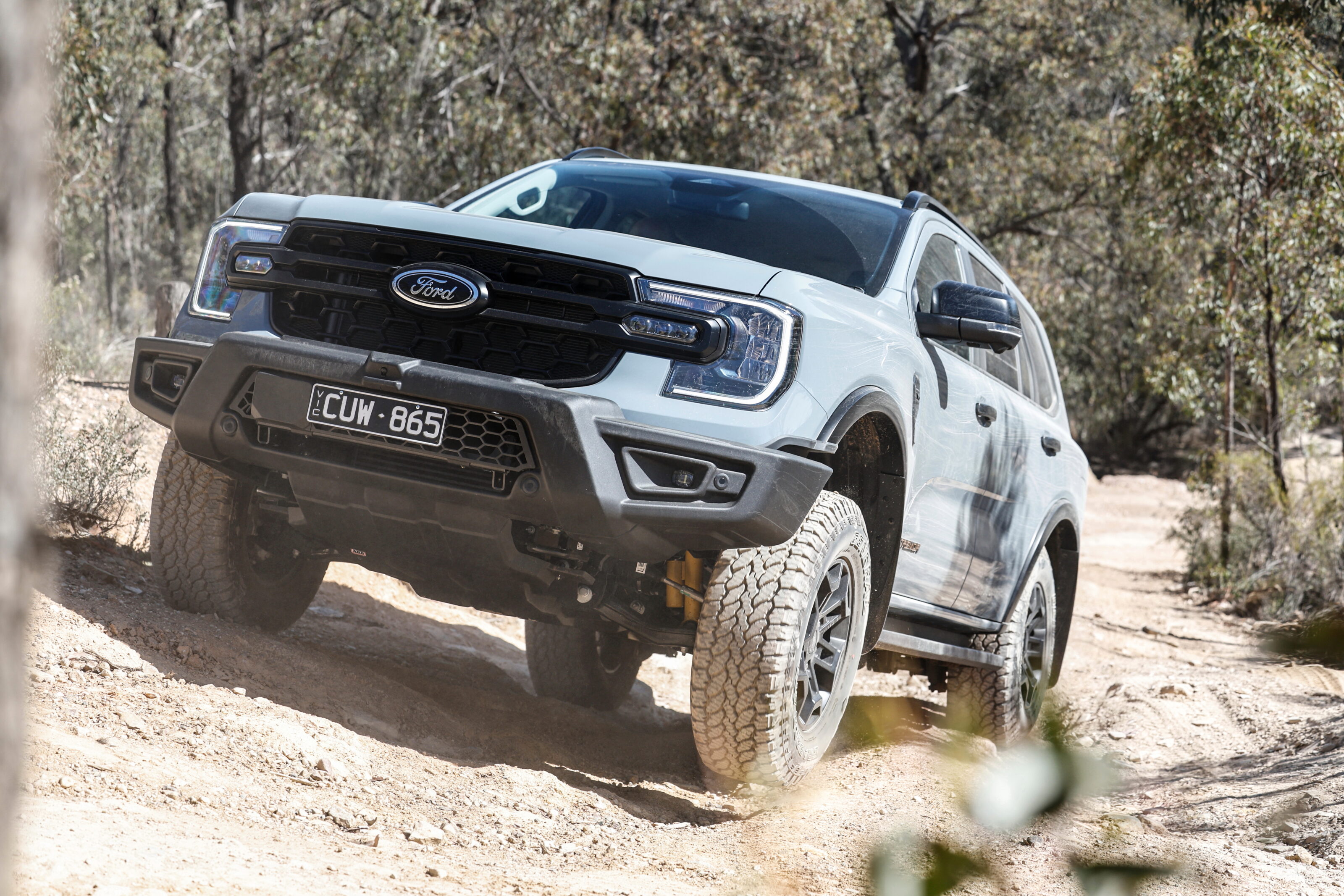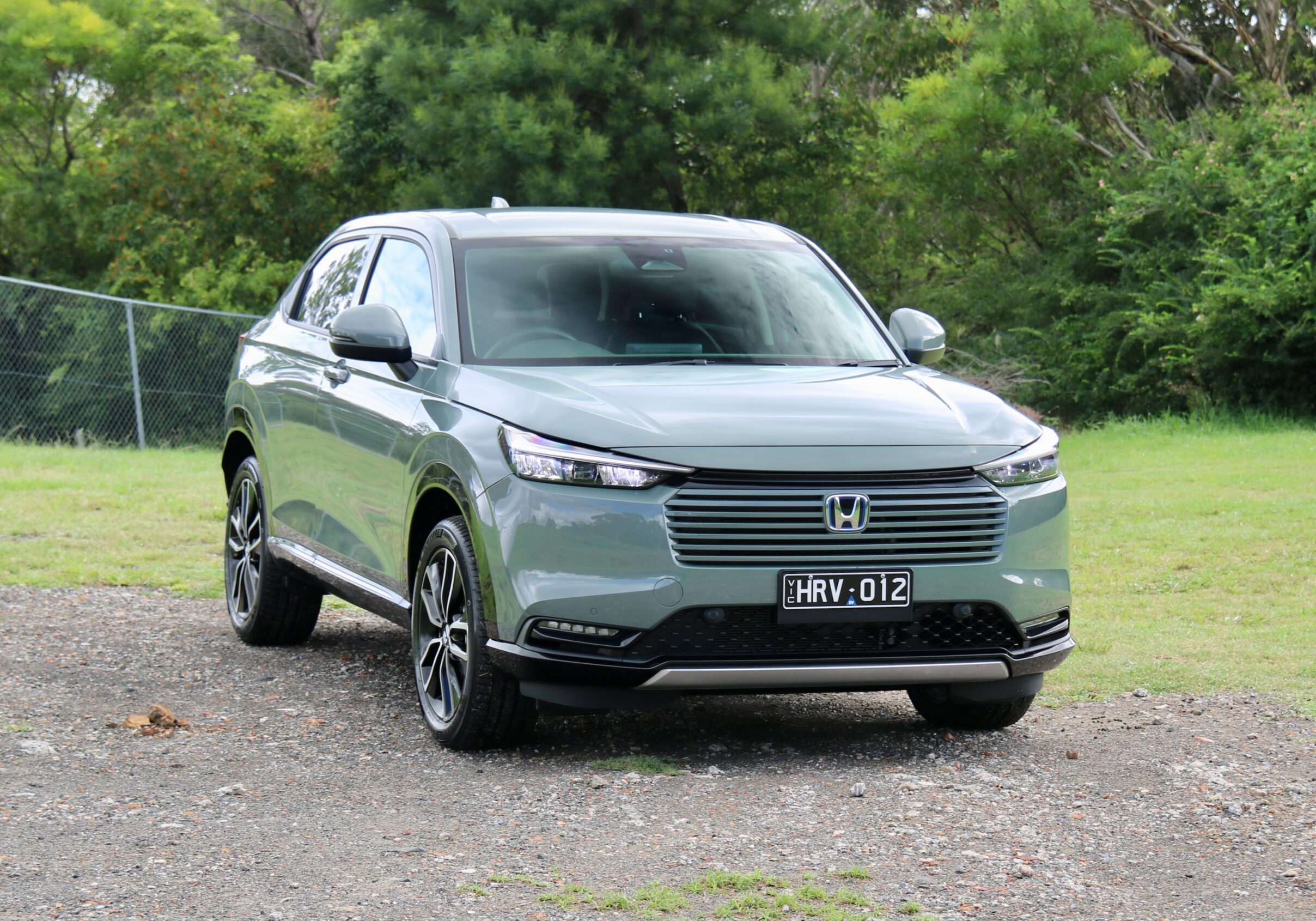
Score breakdown
Things we like
- EyeSight active safety
- Great to drive
Not so much
- No seven-seat option
What stands out?
The Subaru Outback is a five-seat alternative to the bulky, large SUVs but is still very roomy. It has a smart all-wheel-drive system and an elegant interior that accommodates adults comfortably in the rear. Based on the Subaru Liberty wagon, the Outback rides higher and handles gravel roads well. All Outbacks have autonomous emergency braking.
What might bug me?
Not much. Perhaps banging your head on the tailgate: tall people may find it doesn’t rise high enough.
What body styles are there?
Five-door wagon only.All Subaru Outbacks drive all four wheels. Even though it is based on the Subaru Liberty medium car, the Outback is classed as a large SUV, lower priced.
What features do all Outbacks have?
A touchscreen with Apple CarPlay/Android Auto and Bluetooth connectivity for phones and audio streaming. An MP3 and iPod compatible sound system with an AM/FM radio, a CD player, and Aux and USB inputs.Every Outback comes with a reversing camera, and advanced active safety system that Subaru calls EyeSight. Eyesight includes adaptive cruise control (which matches your speed to that of a vehicle ahead), lane-keeping assist, and autonomous emergency braking that works at city and highway speeds and also detects pedestrians.A leather-wrapped steering wheel that is adjustable for height and reach, and with paddle shifters, and buttons for operating the cruise control, the audio system and your phone.Roof rails with integrated crossbars, and rear roof spoiler.Dual-zone air-conditioning (which lets you set different temperatures on either side of the cabin). Windscreen wipers that operate automatically when it rains, and headlamps that switch on automatically in low light.Aluminium alloy wheels, which are lighter and more stylish than steel wheels, and a full-size spare wheel.Dusk sensing, auto-off headlights with integrated daytime running lights, and front fog-lampsTinted windows at the back: they keep the cabin slightly cooler on a hot day and make it harder to see in.Metallic or pearl paint finishes. There are 10 colours to choose from, at no extra cost.Seven airbags: one directly in front of each front occupant; an airbag to protect the driver’s knees; two protecting the bodies of front occupants from side impacts; and side curtain airbags that protect the heads of front and rear occupants from side impacts.Electronic stability control, which can help control a skid. All new cars must have this feature.All Outbacks are covered by a five-year, unlimited-kilometre warranty.
Which engine uses least fuel, and why wouldn’t I choose it?
The 2.0-litre turbo-diesel that powers the Outback 2.0D is the most fuel-efficient engine, using as little as 6.3 litres/100km in the official test (city and country combined).One reason you might not choose a diesel Outback is that it’s fitted with a particulate filter and therefore are not suited to predominantly urban driving. You need to spend half an hour at country-road speeds every week or two so that the filter can clean itself.The most fuel-efficient alternative engine, the 2.5-litre four-cylinder petrol, uses 7.3 litres/100km in the official test – a good figure given the size of the car. It comes with a stop-start system, which saves fuel in heavy traffic by switching off the engine when the car is stationary.The most powerful engine in an Outback is the 3.6-litre six-cylinder that powers only the most expensive model, the Outback 3.6R. It provides about 50 per cent more power than the 2.5 petrol in most driving conditions but uses significantly more fuel (9.9 litres/100km).Subarus are unusual in that their horizontally opposed ‘boxer’ engines lie flat in the engine bay rather than standing vertically. That means more of the engine weight is carried low in the car, which helps improve handling.All Outbacks are automatics, using a continuously variable transmission, or CVT that can drive all four wheels. Rather than driving through a fixed number of gear ratios, the CVT generally responds seamlessly to the driver’s demands, improving performance and decreasing fuel use.
What key features do I get if I spend more?
The 2.5i and 2.0d come with the features that all Outbacks have, with cloth seats, and a 6.5-inch touchscreen.Spending more on a 2.5i X brings water-repellent cloth seats, with the front seats heated and power-adjusted. The touchscreen is slightly bigger, at 8.0 inches, and there is satellite navigation, a sunroof, a power-raised tailgate, push-button start, and smart key entry that allows you to unlock the front doors just by grabbing a handle if the key is nearby (for example, in a pocket or bag).The 2.5i X also beings more active safety features that were previously only available in more expensive Premium versions. Chief among these are Blind Spot Monitoring, which alerts you to nearby cars that are out of view, and Rear Cross Traffic Alert that lets you know, when you are reversing, that other vehicles are about to cross behind.You also get LED headlamps that dip automatically for oncoming drivers and point into corners to light up the direction you’re travelling, while front- and side-view cameras help prevent collisions when parking by providing a better view of walls and hidden obstacles.The 2.5i X’s grille, alloy wheels, wheel-arch mouldings and door mirrors are all blackened to give it a more rugged aesthetic.The 2.5i and 2.0D Premium versions have all the features found in the 2.5i X with the addition of leather seats, though the alloy wheels, grille and door mirrors aren’t black.The most expensive Outback, the 3.6R, has the much more powerful, six-cylinder, petrol engine and all the equipment from Outback Premiums. It also has a better-sounding, Harman Kardon, audio system.All petrol Outbacks and the Premium diesel have 18-inch wheels. (The less costly of the diesel versions has 17-inch wheels.)
Does any upgrade have a down side?
The 3.6R loses the auto stop-start function, which adds to the increased fuel consumption over the 2.5i and 2.5i X variants, and it also costs more to service.If paying more for a 2.5i X your colour options are limited to just five hues: Crystal White, Crystal Black, Dark Blue, Magnetite Grey and Wilderness Green. All other versions have 10 colour options.
How comfortable is the Outback?
The Outback has an inviting and cleanly presented cabin with great head room up front, and the driving position has a wide range of adjustment.The touchscreen is easy to navigate, with additional buttons and control knobs that help. Steering wheel controls are logically laid out.Even the electronic park brake button is elegant – and its operation is intuitive, in so far as it mimics a traditional handbrake: up for on, and down for off. Large temperature controls complete a good ergonomics package.Vision is good from the cabin, too, while the seats are broad and supple, with enough lateral support to hold you in place when cornering.Because it is based on a passenger wagon, the Outback is less bulky than most large SUVs. That works well around the suburbs, where it is easy to manoeuver and park.The steering is light, and well shielded from unwanted kickback, and it works well with the suspension to provide an agile and obedient vehicle.That suspension is noticeably firm at slow speeds, which detracts slightly from the otherwise comfortable – and quiet – driving experience. The Outback is excellent at negotiating potholes and rough roads. The ride is marginally better on the less costly of the diesel models, because its higher-profile 17-inch tyres place more rubber and air between the wheel and the road.The 2.5-litre petrol engine is quiet and responsive, with moderate acceleration. A steep hill on a country road will have it working hard. The CVT auto teams well with the engine, maintaining smooth progress. Occasionally it will fumble if you demand more power abruptly.The 3.6R Premium feels noticeably punchier, and accelerates much harder in all situations.The diesel engine feels more lethargic than either petrol when starting off but feels more muscly and relaxed than the 2.5 petrol once under way. The CVT auto helps you make the most of it, keeping the engine in its sweet spot.
What about safety in a Subaru Outback?
The Outback has good airbag protection for all occupants, and seatbelt warning lights for all five seats.The standard reversing camera is reassuring. Automatic windscreen wipers and headlamps add to the safety package, reducing demands on the driver’s attention and, in the latter case, responding reliably to poor visibility.The EyeSight active safety system on all Outbacks offer sophisticated autonomous emergency braking. A computer monitors images from two cameras mounted above the windscreen. If it detects an obstacle – typically another car that has slowed suddenly – it will warn you, and if you do not respond quickly it will brake the car for you. The system works at all speeds below 145km/h, although how much it can slow you will depend on your speed and the conditions.EyeSight also warns you if you are drifting out of your lane (a sign of fatigue) and will steer itself within lane markings. A lead vehicle start alert tells you that the vehicle ahead of you in a queue has moved on.The adaptive cruise control recognises brake lights and sees vehicles from longer distances and wider angles, making it even safer on multi-lane roads or when vehicles cut across lanes.Outback 2.5i X, Premiums and the 3.6R, also monitor blind spots, and when reversing alert you to vehicles crossing behind.(To see a list of the safety features on any model, select the model from the Cars Covered By This Review dropdown near the top of this page, and look under the features tab. Safety-related features are listed in red.)The Australasian New Car Assessment Program (ANCAP) has rated the Outback at five stars for safety, its maximum rating.
I like driving – will I enjoy this car?
There is plenty to like about the way the Outback drives, and if you enjoy twisting country roads you will be rewarded. Partly because it’s not as tall as some big SUVs, the Outback leans less through corners and therefore holds the road better.On particularly bad road conditions the Outback as a feature called X Mode that helps the Outback safely negotiate slippery surfaces and inclines by constantly monitoring the traction available to each wheel and centralising control of the engine, transmission, brakes and other components. To engage the system simply press the X Mode button near the gear shifter while travelling below 40 km/h.Subaru’s all-wheel-drive system works very well, too. While most highway-focused all-wheel drive SUVs rely primarily on the front wheels, sending power to the rear only if the front tyres begin to slip, the Subaru sends drive evenly to the front and rear wheels. That inspires confidence when driving out of tight corners.In the 2.5i there is an SI-Drive system, for Subaru Intelligent Drive, which has an Intelligent mode (for saving fuel) and a Sport mode (for more spirited driving). The system adjusts throttle sensitivity, with the Sport mode the more enjoyable, even around town: you don’t have to press the accelerator as hard to get the power that you want.Less enticing for spirited driving is the diesel engine, which runs out of puff sooner than the 2.5i when you want all the go you can get. But while the petrol engines are more enjoyable in most situations, the diesel is great for highway cruising, where it feels quite relaxed and is the most fuel efficient.The much more powerful 3.6R petrol also gets SI-Drive but adds a third mode, Sport Sharp. It makes the accelerator – and the transmission – even more sensitive to pressure from your right foot on the pedal. It’s good on a twisty road where you’re changing speeds regularly, or if you want to drive fast, but otherwise the regular Sport mode is the best compromise.The CVT auto in the 3.6R generally works well with the engine, providing smooth acceleration. With this engine the Outback is a brisk SUV, building pace effortlessly for overtaking.The Outback is a light-duty off-roader, best limited to gravel tracks and mud- and snow-covered roads.
How is life in the rear seats?
The Outback has one of the more accommodating back seats for adults in a large SUV. Headroom is good and legroom is excellent, with good space for feet also.The centre seat sits slightly higher and so the centre passenger has less headroom and side-support than the others. But the angle of the seatback can be adjusted.Three child seats can be fitted across the rear seat using standard anchor points, or you can fit up to two using ISOFIX anchors. The rear doors open wide which helps with putting children in their seats.There are rear air-conditioning vents, two USB ports and a folding centre armrest.
How is it for carrying stuff?
The Outback is a deceptively big car and has a big 512-litre boot that is long and fairly wide. The floor is flat, albeit quite high, and it’s easy to load things.The back seats fold in a 60/40 configuration and there’s a choice of two levers to operate them: one on the top of the seat-backs (for pushing from behind), and one on the edges of the seats themselves (which are easier to get at from the seats). Putting the seats down brings up to 1801-litres of space which translates to quite long loads – we managed to fit a 1.9m long TV cabinet in an Outback.The luggage blind has to be retracted manually and doesn’t rise automatically with the tailgate.Four-cylinder petrol Outbacks can tow 1500kg, which is on par with some medium SUVs but less than many large SUVs. The 3.6R lugs a more respectable 1800kg, while the diesel sits between them at 1700kg.
Where does Subaru make the Outback?
All Subaru Outbacks are made in Japan.
What might I miss that similar cars have?
Perhaps the two extra seats that many big SUVs offer. Among seven-seater SUVs are the Holden Acadia, Hyundai Santa Fe, Kia Sorento, Toyota Kluger, Nissan Pathfinder, Skoda Kodiaq and Mazda CX-8 or CX-9.Other cars that you might consider include the Ford Endura, Volkswagen Passat Alltrack, Skoda Superb 4×4, and the Jeep Grand Cherokee.
I like this car, but I can’t choose which version. Can you help?
The 2.5i is a great car for under $40,000. It’s loaded with features, including class-leading safety technology, and the petrol engine offers decent performance. The leather-laced luxury of the Premium would be nice, but the cheaper 2.5i does just fine.
Are there plans to update the Outback soon?
The current generation Outback went on sale in late 2014. A modest update in February 2016 added EyeSight to auto-gearbox diesel models (EyeSight remained unavailable on manual diesels), and brought minor suspension changes. Blind spot monitoring and rear cross-traffic alert were added to Outback Premiums and the 3.6R.Another update in early 2018 brought a mild facelift, with a new grille and more premium-look cabin. The manual gearbox was deleted which meant EyeSight became standard across the Outback range and lane-keeping assist was added to the list of active safety features. Performance was also tweaked for greater handling, throttle response and efficiency.In 2019 Subaru introduced the limited edition 2.5i-X that added plenty that brought a more rugged look and plenty of features found in the Premium versions. This proved so popular that it was added a permanent version for the 2020 model year.A new generation Outback will launch overseas during the middle of 2020 and will launch in Australia either at the end of the year, or in early 2021. It will be available with new turbocharged petrol engines, though no word of there will be a hybrid version as now available with the Subaru XV and Forester.
Score breakdown
Things we like
- EyeSight active safety
- Great to drive
Not so much
- No seven-seat option



